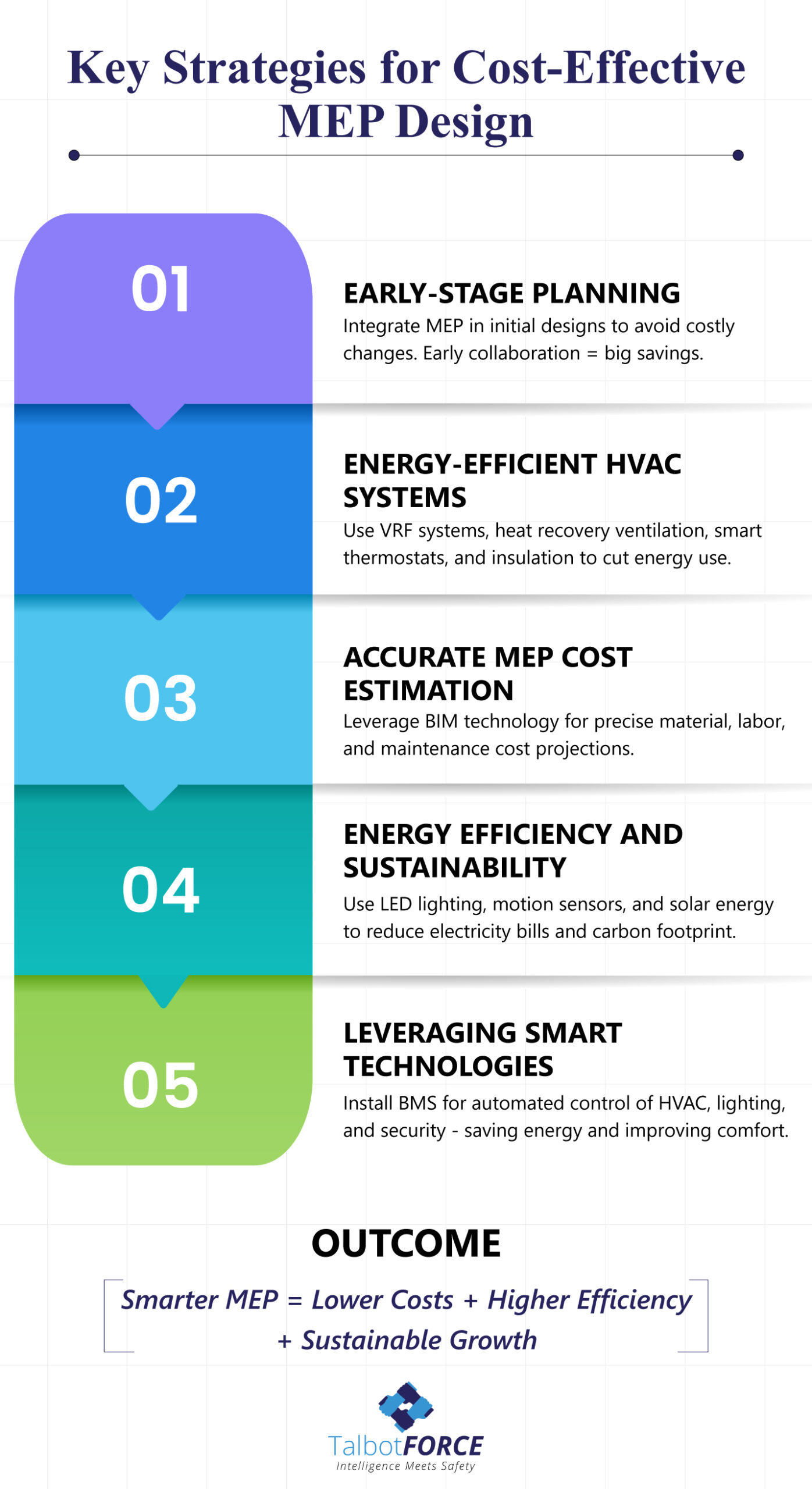MEP Design for Cost-Effective, High – Performance Buildings
In the world of construction, building systems such as mechanical, electrical, and plumbing (MEP) form the backbone of all modern architecture. They determine a structure’s operational efficiency and sustainability and optimise cost-saving features in the long run.
Whether it is a commercial structure, an industrial facility or a residential complex, achieving a cost-effective MEP design that prioritises reduced energy consumption, improved functionality and a seamless indoor environment is essential.
In this blog post, we shall delve deeper into the subject matter of MEP and the crucial role it plays while constructing any building, irrespective of its category.
MEP Design: The What, Why & How
MEP design refers to the integrated planning and implementation of mechanical, electrical and plumbing systems within a building. These setups are vital for incorporating efficient lighting, ventilation, air conditioning (HVAC), lighting, water supply, fire protection and drainage. Thereby, a well-executed MEP design is the key to enhanced building performance, cost-effective maintenance and alignment with green building standards.
Real estate constructors, developers or office space providers should diligently consider investing in MEP services, as it has a direct impact on the overall success of the project and occupant’s satisfaction level. Most importantly, it is extremely crucial to strike a balance between the cost of the services and performance to keep the project on budget without compromising on the quality.
Key Strategies for Cost-Effective MEP Design
1. Early-Stage Planning:
It is imperative to include MEP designs in building designs from the very beginning. Proper communication between architects, structural engineers and MEP specialists right from the blueprint stage helps prevent expensive alterations later in the construction stage. Thus, having optimised layouts by sorting potential clashes paves the way for significant savings in terms of materials and labour costs.
2. Energy Efficient HVAC Systems:
HVAC systems play a significant part in building sustainable buildings. Having energy-efficient set-ups such as Variable Refrigerant flow, heat recovery ventilation, and smart thermostats in place can reduce energy costs to a great extent. Apart from this, utilising high-performing insulation materials can further assist in scaling HVAC efficiency.
3. Accurate MEP Cost Estimation:
When it comes to optimising MEP costing, it is essential to map out material costs, labour expenses, installation complexities and long-term maintenance needs and other overhead expenses to have all the aspects under control. For this purpose, Building Information Modelling (BIM) technology can be utilised to achieve precise cost projections without going overboard with the expenses.
4. Energy Efficiency and Sustainability:
Cutting-edge lightning technologies like LED fixtures, motion sensors, and daylight harvesting are designed to help reduce electricity bills at a remarkable scale. Along with this installation of solar panels can be a cheaper alternative to traditional power grids.
5. Leveraging Smart Technologies:
Installing Smart Building Systems (BMS) helps with the accurate monitoring and control over MEP structure, which further helps in improving efficiency by reducing energy wastage. This technology also provides automated control over HVAC and security systems that not only help with the long-term savings but also contribute towards enhancing occupants’ comfort.
Future Trends in MEP Systems
Anticipating an adapting to the upcoming trends in the MEP designing ecosystem is crucial to stay ahead in the industry. As AI and technology are increasingly taking over all the industries, the MEP landscape will also be reshaped with their application.
Some of the prominent trends that have already created quite a buzz in this sector are the integration of smart building technologies and Building Information Modelling. While the former helps with real-time data, allowing precise operations planning, the latter provides a digital presentation of building systems, helping experts streamline collaborations among all the project stakeholders.
Moreover, with the growing focus on sustainable construction, integrating innovative MEP practices that are in alignment with environmental goals will gain more limelight.
Conclusion
Navigating the maze of construction structures to build cost-effective and optimised MEP systems is a multifaceted process and requires careful planning, strategic decision making and constant evaluation.
Thus, investing in an efficient EMP system that prioritises energy efficiency, sustainable solutions is the need of the hour. Along with this, accurate MEP cost estimation helps developers, property managers, or office space providers optimise operational expenses and enhance building longevity.

